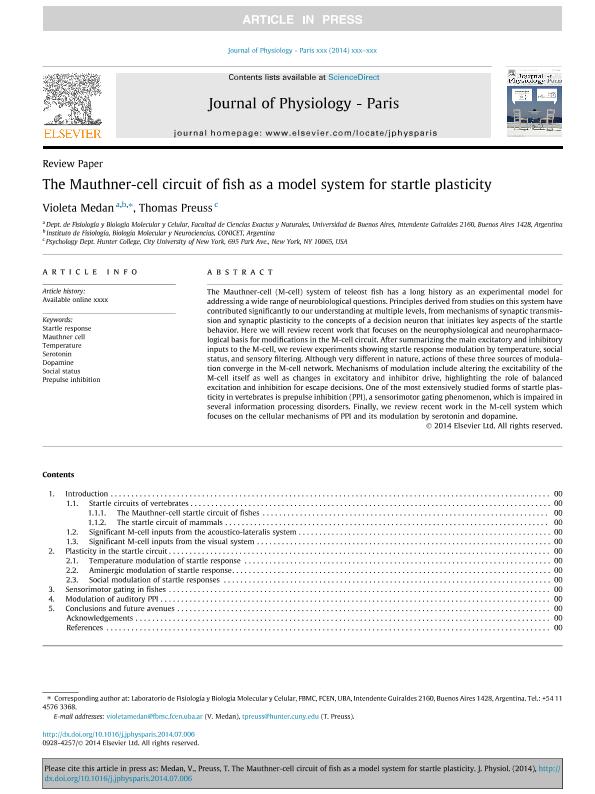Artículo
The Mauthner-cell circuit of fish as a model system for startle plasticity
Fecha de publicación:
04/2014
Editorial:
Elsevier
Revista:
Journal of Physiology
ISSN:
0928-4257
Idioma:
Inglés
Tipo de recurso:
Artículo publicado
Clasificación temática:
Resumen
The Mauthner-cell (M-cell) system of teleost fish has a long history as an experimental model for addressing a wide range of neurobiological questions. Principles derived from studies on this system have contributed significantly to our understanding at multiple levels, from mechanisms of synaptic transmission and synaptic plasticity to the concepts of a decision neuron that initiates key aspects of the startle behavior. Here we will review recent work that focuses on the neurophysiological and neuropharmacological basis for modifications in the M-cell circuit. After summarizing the main excitatory and inhibitory inputs to the M-cell, we review experiments showing startle response modulation by temperature, social status, and sensory filtering. Although very different in nature, actions of these three sources of modulation converge in the M-cell network. Mechanisms of modulation include altering the excitability of the M-cell itself as well as changes in excitatory and inhibitor drive, highlighting the role of balanced excitation and inhibition for escape decisions. One of the most extensively studied forms of startle plasticity in vertebrates is prepulse inhibition (PPI), a sensorimotor gating phenomenon, which is impaired in several information processing disorders. Finally, we review recent work in the M-cell system which focuses on the cellular mechanisms of PPI and its modulation by serotonin and dopamine.
Archivos asociados
Licencia
Identificadores
Colecciones
Articulos(IFIBYNE)
Articulos de INST.DE FISIOL., BIOL.MOLECULAR Y NEUROCIENCIAS
Articulos de INST.DE FISIOL., BIOL.MOLECULAR Y NEUROCIENCIAS
Citación
Medan, Violeta; Preuss, Thomas; The Mauthner-cell circuit of fish as a model system for startle plasticity; Elsevier; Journal of Physiology; 108; 2-3; 4-2014; 129-140
Compartir
Altmétricas




